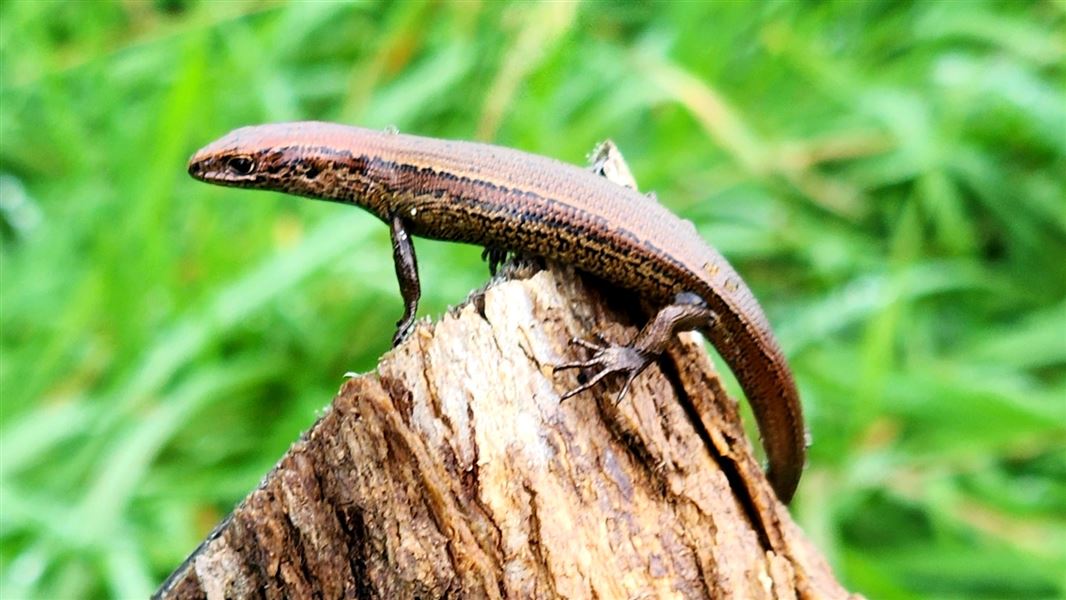Archived content: This media release was accurate on the date of publication.
Date: 14 April 2023
The skinks, whose conservation status is threatened–nationally critical are only found in a one kilometre coastal strip near Hokitika. When Cyclone Fehi hit the area hard in 2018, DOC moved 50 of them to Auckland Zoo for safekeeping. There they bred successfully, almost doubling their numbers.
Since the cyclone, the Kapitia Scientific Reserve has been established as a safe haven for the skinks which are distinguished by their salmon-coloured underside and a prehensile tail. The tail indicates they are adapted to a life in trees as they can use it to grip objects and help them climb.
DOC Hokitika Operations Manager Owen Kilgour says this is the third and final translocation of these skinks.
“In November 2021 we moved 42 skinks into the newly finished reserve. Twenty gravid females and three juveniles remained at Auckland Zoo and were subsequently released last November. A further 21 offspring from the 20 females - which were too young to release in 2022 - made the trip this week.
“The predator free reserve has been a great success and the skinks in there are thriving. As well as threats to their habitat from storm damage, the Kapitia skinks are vulnerable to predators such as rats and mice, which attack them if they are too cold to move and eat them alive.”
Some Kapitia skinks found in the wild have also been moved into the reserve.
“DOC’s lizard technical advisory group has been a huge support for this project from the start and I’m really grateful for the dedication of our Hokitika staff,” Owen Kilgour says.
“Auckland Zoo did an amazing job of looking after the skinks. We had to ensure the species survived and asked them for help. They took the skinks at short notice, cared for them, and bred additional animals as well.”
Auckland Zoo head of animal care and conservation, Richard Gibson says the final release of Kapitia skinks from the Zoo was a bitter-sweet moment for his team.
“We’ve been privileged to work with these extraordinarily rare and interesting little skinks for five years, since they were proactively removed from harm’s way as part of a multi-disciplinary recovery initiative.
“We have learnt a great deal about their behaviour and diet preferences, which will inform habitat restoration inside their reserve. We also managed to almost double the number of skinks originally received.
“Seeing them return to the West Coast in just five short years – a blink of an eye in conservation terms - is remarkable and a testament to what dedicated and focused partnership can achieve.”
Owen Kilgour acknowledged the support of Ngāti Waewae and local landowners for the project and Westland District Council, which allowed road reserve land to be used.
The skinks travelled with Air New Zealand from Auckland to Hokitika via Christchurch. They were accompanied by Zoo staff and a film crew making a wildlife documentary series about the Zoo.
Air New Zealand is a national partner with DOC for conservation and has supported DOC to fly over 4200 threatened species and Conservation Dogs since 2012.
Futher information
Kapitia skinks were formerly known as Chesterfield skinks, referring to the locality in which they were found. Māori know the area as Kapitia. In November 2020 the skinks were named the Kapitia skink.
Contact
For media enquiries contact:
Email: media@doc.govt.nz
